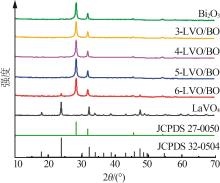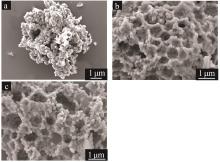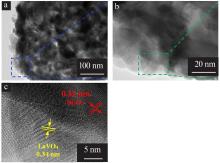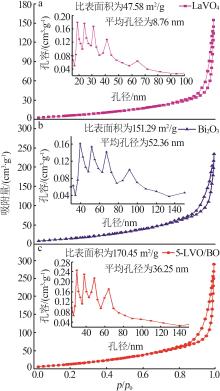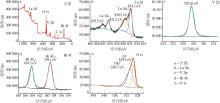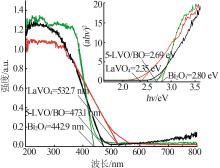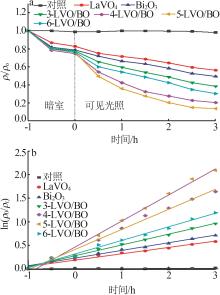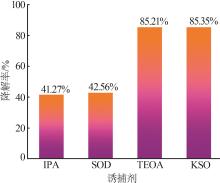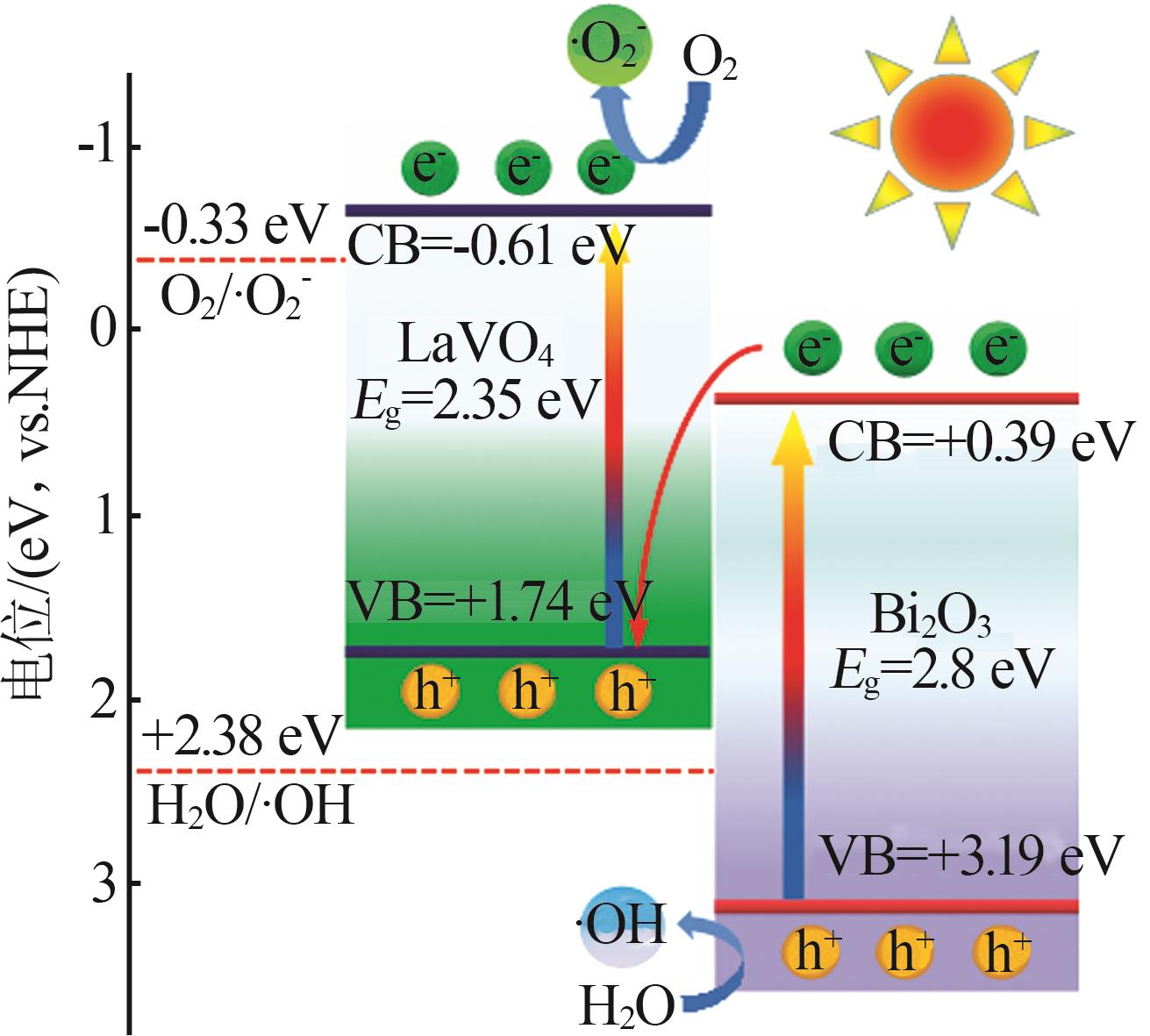Inorganic Chemicals Industry ›› 2024, Vol. 56 ›› Issue (11): 158-164.doi: 10.19964/j.issn.1006-4990.2024-0149
• Catalytic Materials • Previous Articles Next Articles
Study on hnoneycomb-like LaVO4/Bi2O3 heterojunction for photocatalytic degradation of tetracycline hydrochloride
ZUO Guangling1,2( ), WANG Minghui1,2, PENG Yunying1, DU Jia1,2, YE Hongyong1,2(
), WANG Minghui1,2, PENG Yunying1, DU Jia1,2, YE Hongyong1,2( )
)
- 1.School of Biological and Chemical Engineering,Nanyang Institute of Technology,Nanyang 473000,China
2.Henan Key Laboratory of Industrial Microbial Resources and Fermentation Technology,Nanyang 473000,China
-
Received:2024-03-14Online:2024-11-10Published:2024-04-22 -
Contact:YE Hongyong E-mail:zuoguangling2009@163.com;yehongyong2016@163.com
CLC Number:
Cite this article
ZUO Guangling, WANG Minghui, PENG Yunying, DU Jia, YE Hongyong. Study on hnoneycomb-like LaVO4/Bi2O3 heterojunction for photocatalytic degradation of tetracycline hydrochloride[J]. Inorganic Chemicals Industry, 2024, 56(11): 158-164.
share this article
| 1 | 晏超群,张贤明,魏娟,等.立方体形α-Fe2O3光催化剂的合成及其可见光芬顿降解抗生素[J].无机盐工业,2023,55(8):28-35. |
| YAN Chaoqun, ZHANG Xianming, WEI Juan,et al.Synthesis of cubic α-Fe2O3 catalyst and its photo-Fenton degradation performance of antibiotic under visible light[J].Inorganic Chemicals Industry,2023,55(8):28-35. | |
| 2 | 杨阳,仝瑶,封莉,等.纳米TiO2暴露对水中四环素类抗生素光降解行为的影响[J].环境工程学报,2023,17(10):3178-3189. |
| YANG Yang, TONG Yao, FENG Li,et al.Effects of nano-TiO2 exposure on the photodegradation behavior of tetracycline antibiotics in aquatic environment[J].Chinese Journal of Environmental Engineering,2023,17(10):3178-3189. | |
| 3 | 刘婧妍,李宁,朱栩楷,等.生物炭负载纳米零价铁活化过一硫酸盐降解诺氟沙星[J].环境科学学报,2023,43(10):47-61. |
| LIU Jingyan, LI Ning, ZHU Xukai,et al.Efficient peroxymonosulfate activation for norfloxacin degradation over distributing nano zero-valent iron onto biochar[J].Acta Scientiae Circumstantiae,2023,43(10):47-61. | |
| 4 | 兰蓥华,陈艳梅,马瑞霄,等.铈钛氧化物-凹凸棒土的制备及其光催化性能[J].无机盐工业,2023,55(4):133-140. |
| LAN Yinghua, CHEN Yanmei, MA Ruixiao,et al.Preparation and photocatalytic performance of Ce-Ti oxide-attapulgite composit-es[J].Inorganic Chemicals Industry,2023,55(4):133-140. | |
| 5 | SAHU S K, SIKDAR S, GHOSH M K,et al.Investigation of photocatalytic and DNA interaction of novel heterostructured GO/Bi2O3/ZnO nanocomposite[J].Materials Science for Energy Technologies,2022,5:324-333. |
| 6 | DHANASEKARAN E, SIVAKUMAR N, SRIHARAN N.Enhanced photocatalytic degradation of Gd-doped Bi2O3 for selective dyes under UV light irradiation[J].Journal of Optoelectronic and Biomedical Materials,2022,14(3):77-87. |
| 7 | GUAN Xin, WANG Xiaoli, ZHU Xuewen,et al.Construction of a Z-scheme heterojunction bifunctional photocatalyst with Ag-modified AgBr embedded in β-Bi2O3 flowers[J].Physical Chemistry Chemical Physics,2023,25(19):13474-13486. |
| 8 | RANI M,Meenu, SHANKER U.Efficient cleanup of emerging contaminants by green biosynthesized Z-scheme-type Bi2O3@CdS nanocomposite with improved photoactivity[J].Nanotechnology for Environmental Engineering,2023,8(1):197-218. |
| 9 | HE Rongan, LIU Haijuan, LIU Huimin,et al.S-scheme photocatalyst Bi2O3/TiO2 nanofiber with improved photocatalytic performance[J].Journal of Materials Science & Technology,2020,52:145-151. |
| 10 | 谢若兰,何欢,杨世利,等.TiO2-g-C3N4-Bi2O3复合异质结构催化材料在水处理中的应用[J].复合材料学报,2021,38(9):3036-3044. |
| XIE Ruolan, HE Huan, YANG Shili,et al.Application of TiO2-g-C3N4-Bi2O3 composite heterogeneous catalytic materials in water treatment[J].Acta Materiae Compositae Sinica,2021,38(9):3036-3044. | |
| 11 | 王晓丽,张琳萍,周培文,等.稀土掺杂钒酸镧微球的制备及其光催化降解抗生素[J].无机化学学报,2019,35(5):812-818. |
| WANG Xiaoli, ZHANG Linping, ZHOU Peiwen,et al.Prepatation and photocatalytic degratation property of antibiotics of rare earth doped microspherical LaVO4 photocatalysts[J].Chinese Journal of Inorganic Chemistry,2019,35(5):812-818. | |
| 12 | FAN Weiliu, SONG Xinyu, SUN Sixiu,et al.Microemulsion-mediated hydrothermal synthesis and characterization of zircon-type LaVO4 nanowires[J].Journal of Solid State Chemistry,2007, 180(1):284-290. |
| 13 | 郭思琪,邹学军,董玉瑛,等.水热法合成的LaVO4/WO3复合纳米片的可见光光催化还原工业废水中Cr(Ⅵ)效果分析[J].水资源与水工程学报,2019,30(6):116-122. |
| GUO Siqi, ZOU Xuejun, DONG Yuying,et al.Analysis of the effect of visible photocatalytic reduction of Cr(Ⅵ) in industrial wastewater by hydrothermal synthesis of LaVO4/WO3 composite nanoplate[J].Journal of Water Resources and Water Engineering,2019,30(6):116-122. | |
| 14 | ZHANG Mou, XU Jingjing, CHEN Mindong.Novel Z-scheme LaVO4/Bi3O4Cl heterojunctions for highly efficient degradation of ofloxacin under visible light irradiation[J].Journal of Alloys and Compounds,2022,925:166653. |
| 15 | LI Xue, HU Jundie, YANG Tingyu,et al.Efficient photocatalytic H2-evolution coupled with valuable furfural-production on exquisite 2D/2D LaVO4/g-C3N4 heterostructure[J].Nano Energy,2022, 92:106714. |
| 16 | LI Xiaoxiao, ZHANG Kailian, ZHOU Man,et al.The hydrothermal in situ construction of AgVO3/LaVO4 phase junctions for the efficient visible-light-driven disposal of pollutants and photoelectrocatalytic methanol oxidation[J].Sustainable Energy & Fuels,2020,4(5):2569-2582. |
| 17 | 周慧,杜彬,杨鹏斌,等.鸟巢状Bi/β-Bi2O3异质结的制备及其可见光催化性能[J/OL].材料研究学报,2023(2023-12-13).https://kns.cnki.net/kcms/detail/21.1328.TG.20231212.1743.006.html. |
| ZHOU Hui, DU Bin, YANG Pengbin,et al.Odium gluconate assisted synthesis of nest-like Bi/β-Bi2O3 heterojunction and its visible-light driven photocatalytic activities[J/OL].Chinese Journal of Materials Research,2023(2023-12-13).https://kns.cnki.net/kcms/detail/21.1328.TG.20231212.1743.006.html. | |
| 18 | GE Lei, XU Mingxia, FANG Haibo.Preparation and characterization of silver and indium vanadate co-doped TiO2 thin films as visible-light-activated photocatalyst[J].Journal of Sol-Gel Science and Technology,2006,40(1):65-73. |
| 19 | 冯飞,李书文,汪铁林,等.片状铋/钒酸铋复合催化剂的制备及其光催化性能[J].无机盐工业,2021,53(1):107-112. |
| FENG Fei, LI Shuwen, WANG Tielin,et al.Synthesis and photocatalytic performance of sheet-like Bi/BiVO4 composite cataly-st[J].Inorganic Chemicals Industry,2021,53(1):107-112. | |
| 20 | ZHOU Hui, ZHONG Songtao, SHEN Ming,et al.Composite soft template-assisted construction of a flower-like β-Bi2O3/Bi2O2CO3 heterojunction photocatalyst for the enhanced simulated sunlight photocatalytic degradation of tetracycline[J].Ceramics International,2019,45(12):15036-15047. |
| [1] | SHI Wangfang, ZHANG Yongsheng. Study on NO x degradation performance of concrete-based non-metallic boron doped nitrogen-rich carbon nitride [J]. Inorganic Chemicals Industry, 2025, 57(3): 116-123. |
| [2] | LI Zihan, ZHANG Jiaqi, LI Shizhuo, LI Xinyu, LIU Shaozhuo, WANG Yihao, HAO Yucui, LIU Jian, LI Yanhua. Study on synthesis and catalytic mechanism of CdS/g-C3N4 composite photocatalyst [J]. Inorganic Chemicals Industry, 2025, 57(3): 124-132. |
| [3] | SUN Qinghao, LI Keyan, GUO Xinwen. Study on photocatalytic benzyl alcohol oxidation coupled with hydrogen production over Pd/ZnIn2S4 nanosheets [J]. Inorganic Chemicals Industry, 2025, 57(1): 113-119. |
| [4] | LIU Guangming. Study on photocatalytic and mechanical properties of C3N5/NH2-MIL-125(Ti) modified concrete mortar [J]. Inorganic Chemicals Industry, 2025, 57(1): 120-128. |
| [5] | ZHANG Guoqiang, RONG Xilin, XIAO Zhenfang, XUE Ziran, CHENG Hao, FENG Jun, LIU Quan, LU Yao, HUANG Wenyi. Study on preparation and photocatalytic properties of bagasse carbon aerogels loaded with zinc oxide nanoparticles [J]. Inorganic Chemicals Industry, 2024, 56(8): 131-138. |
| [6] | WANG Yawen, WANG Fangfang, GENG Siyu, JU Jia, CHEN Lei, CHEN Changdong. Study on preparation and photocatalytic performance of SrTiO3-SrWO4 [J]. Inorganic Chemicals Industry, 2024, 56(7): 143-149. |
| [7] | LIU Min, HUANG Xiu, ZHANG Liyuan. Research progress of S-type heterojunction photocatalysts [J]. Inorganic Chemicals Industry, 2024, 56(7): 18-27. |
| [8] | LI Jiangpeng, ZHANG Huibin. Synergistic degradation of methylene blue by photo-Fenton and photocatalytic with 3D porous LaFeO3/CeO2/SrTiO3 [J]. Inorganic Chemicals Industry, 2024, 56(5): 141-148. |
| [9] | TANG Bei. Preparation of ZnO/g-C3N4 heterojunction photocatalytic material and its degradation of pyridine [J]. Inorganic Chemicals Industry, 2024, 56(4): 133-142. |
| [10] | HUANG Jianan, LU Xiaoyu, WANG Mitang. Effect of Ba-La co-doping on degradation of methylene blue dye by TaON [J]. Inorganic Chemicals Industry, 2024, 56(2): 146-151. |
| [11] | CUI Xiangdong, LIU Sile. Study on photoelectric performance analysis of g-C3N5 nanorods and removal of Cr(Ⅵ) and methylene blue [J]. Inorganic Chemicals Industry, 2024, 56(10): 159-168. |
| [12] | YAN Yu, ZHOU Wenyuan, YANG Yunfei, WU Junshu, WANG Jinshu, SUN Lingmin. Study on surface regulation of sodium ferric silicate photocatalyst and its enhanced Cr(Ⅵ) photoreduction properties [J]. Inorganic Chemicals Industry, 2024, 56(10): 141-150. |
| [13] | MA Yihong, CHEN Xingtao, TANG Lei. Treatment of printing wastewater by chemical coagulation-TiO2/g-C3N5 photocatalytic degradation [J]. Inorganic Chemicals Industry, 2024, 56(10): 151-158. |
| [14] | YANG Bo, LIANG Zhiyan, LIU Wenyuan, CAO Jiazhen, LIU Xinyue, XING Mingyang. Research progress of application of molybdenum-based catalytic materials for water pollution control [J]. Inorganic Chemicals Industry, 2023, 55(8): 1-12. |
| [15] | YU Hongchao, ZHANG Mengmeng, JIN Tianxiang. Research progress of microstructure and crystal surface effect of Ag3PO4 photocatalysts [J]. Inorganic Chemicals Industry, 2023, 55(8): 13-20. |
| Viewed | ||||||
|
Full text |
|
|||||
|
Abstract |
|
|||||
|
||
